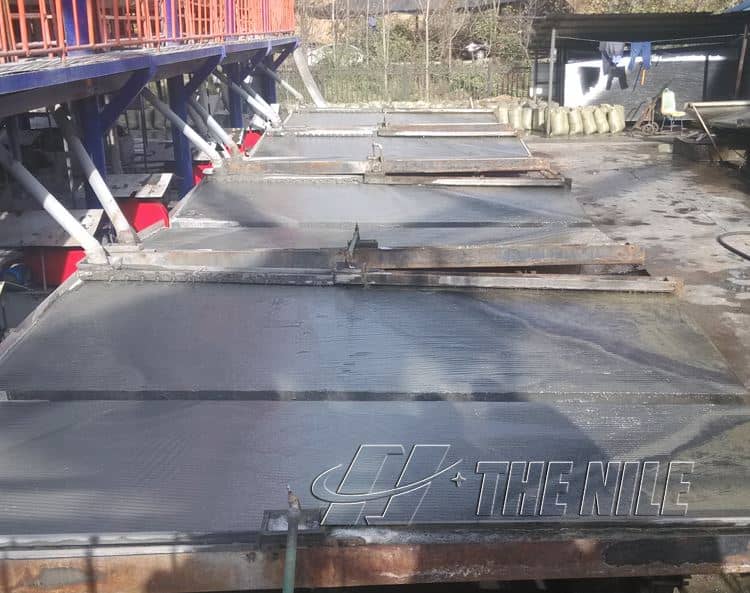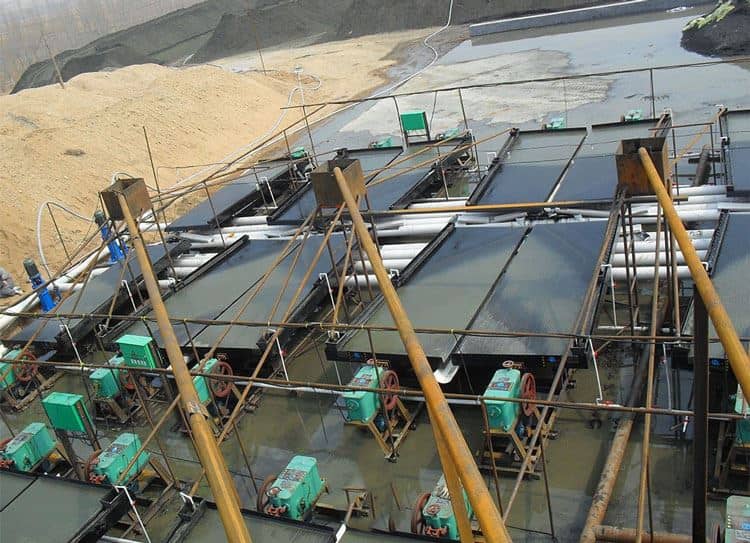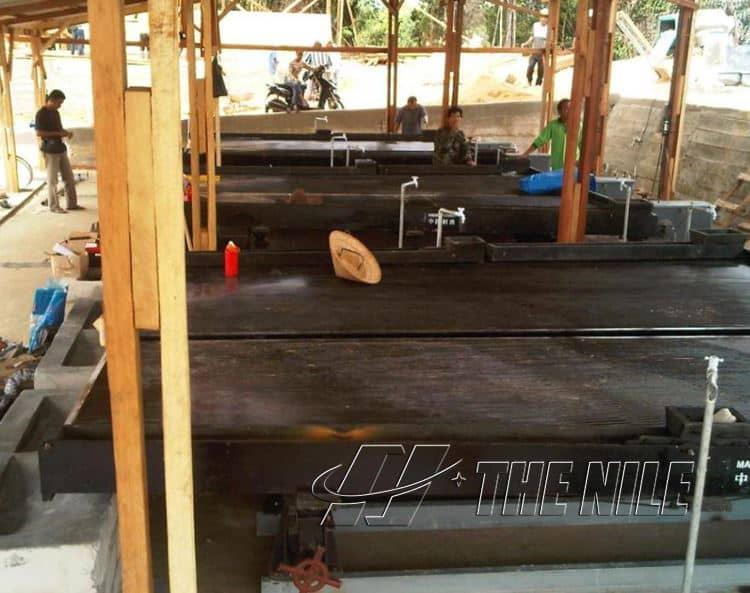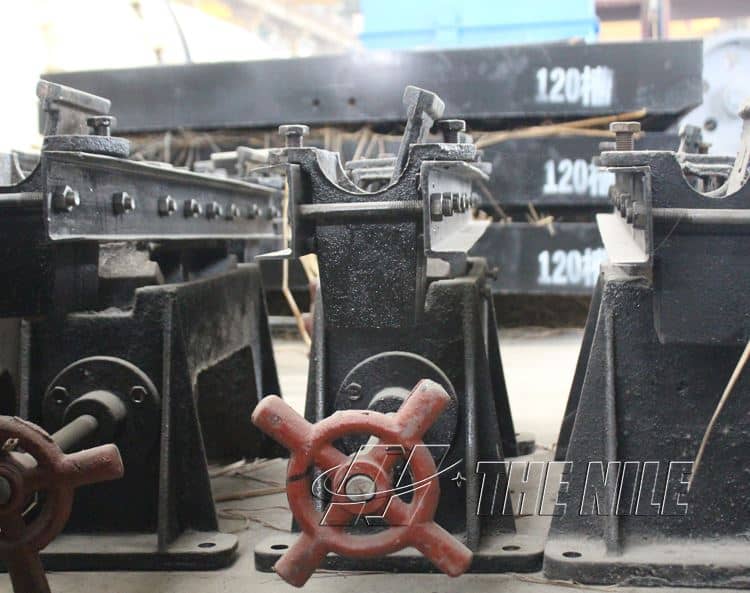
1. Shaking table selection
The choice of shaker should be determined according to the maximum particle size, processing capacity, and plant area of the selected raw ore. The coarse sand shaker is used when the feed size is greater than 0.2 mm, the fine sand shaker is used when the particle size is 0.2~0.074 mm, and the mud shaker is used when the particle size is less than 0.074 mm. The finer the selected material size, the greater the capacity of the shaker. Low.
For example, if the cloud tin shaker is used to process tin ore, the production capacity of the coarse sand shaker when the feed size is 0.5-0.2 mm is about 0.8-1.0t/h, while the production of the 0.074-0.04mm sludge shaker The capacity is only 0.2~0.3t/h. When the plant area is small and the single-layer shaker cannot be opened, the multi-layer shaker can be used.

2. Shaking table machine installation
The installation of the shaker is required to be flat, there should be no abnormal beating during operation, and the longitudinal direction is generally horizontal. When processing coarse-grained materials, the concentrate end should be 0.5° high to improve the beneficiation effect; while the shaker for fine mud is fine The ore tip should be lower by 0.5° to facilitate the movement of fine-grained concentrate.

3. operating points of the shaking table equipment
(1) Appropriate stroke and frequency. The appropriate value of stroke and stroke is mainly related to the selected material size, and secondly to the load of the shaker and the density of the ore. When processing materials with large particle sizes and thick beds, large strokes, and small strokes are used; when processing fine sand and sludge, the opposite is true, and small strokes and large strokes should be used. When the load on the bed surface increases or when materials with higher density are selected, larger strokes and strokes should be used. The appropriate value of stroke and stroke should be determined by careful examination in practice.
(2) Suitable lateral slope of the bed surface. Increasing the lateral slope will enhance the ore particle sliding effect and increase the tailings discharge speed, but the zoning of the beneficiation area becomes narrower. Generally, when dealing with coarse-grained materials, the transverse slope should be larger; when dealing with fine-grained materials, the transverse slope should be smaller. For example, the adjustment ranges of the cross-slope angle of coarse sand, fine sand, and shale shaker are 2.5°~4.5°, 1.5°~3.5°, and 1°~2°, respectively. In addition, the lateral slope of the shaker must match the size of the lateral water flow to have a good selection effect.

(3) The size of the flushing water should be appropriate. The flushing water includes two parts: feed water and washing water. The flushing water should be evenly distributed on the bed surface and the size should be appropriate. The grade of the large concentration of the flushing water is improved, but the recovery rate is reduced. Generally, when processing coarse-grained materials or selecting, flushing The water should be larger.
(4) The amount of ore is appropriate and even. The amount of ore feed is related to the selected particle size. The coarser the particle size, the larger the feed quantity should be. For specific materials, the amount of ore feed should be controlled so that the bed surface utilization rate is large, the zoning is obvious, and the tailing grade is within the allowable range. If the feed rate is too large, the recovery rate will be significantly reduced. In addition, once the amount of ore has been accurately identified, it must be kept uniform, otherwise, the zoning will be unstable and cause fluctuations in the selection index.
(5) The quality score of the ore is appropriate. Generally, the ore mass fraction ranges from 15% to 30%. The coarse-grained materials can be thinner, and the fine mud should be thicker. Most of the water in the mine flows down laterally along the tailing belt, and the fine mud is easily washed away, causing the loss of fine-grained metal minerals.

(6) Preparation of materials before selection. The upper limit of the selected particle size of the shaker is 2~3mm, and the lower limit is 0.037mm. Because the particle size has a greater influence on the sorting index, the materials should be classified before being selected. If the material contains a large amount of fine sludge, it is not only difficult to recover, but also because the viscosity of the ore slurry increases, the sedimentation of heavy minerals becomes slower, causing the loss of heavy minerals. At this time, pre-desludging should be carried out.
(7) Sub-banding of materials on the bed surface and interception of products. When the operating conditions are suitable, it is obvious that the materials are separated on the 6-S shaking table, and the products are cut according to the required sorting index, which can be divided into 2 to 4 kinds of products, and China Mines generally needs to be reprocessed. When the operating conditions change, the zoning situation will change accordingly. At this time, the access position must also be adjusted accordingly to ensure the stability of the selection index. Therefore, shaker operators must stick to their posts, closely monitor the zoning situation, and make necessary adjustments at any time.